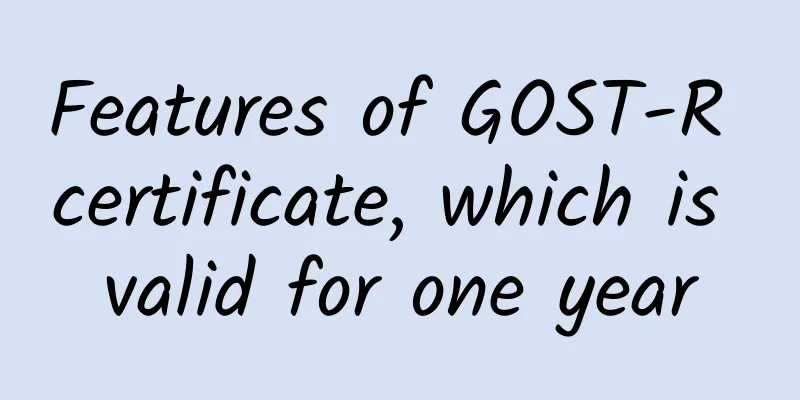What products are the most profitable on Lazada in 2020?

|
With the popularity of the Southeast Asian market and the support of Alibaba, Lazada has undoubtedly become the "new favorite" of Chinese overseas sellers after Amazon. 1. Introduction to Lazada Platform In 2012, Lazada was established in Southeast Asia with its Chinese name "Lazada" and its headquarters in Singapore. In 2016, Alibaba began to invest in Lazada, and in 2017 it increased its investment and took full control of the company. It also upgraded and empowered Lazada in various aspects including platform, products and logistics. Lazada now has branches in six countries: Indonesia, Malaysia, the Philippines, Singapore, Thailand and Vietnam. The platform has 600 million users, including more than 3,000 brand suppliers, 155,000 sellers, and more than 300 million SKUs. Except for Vietnam, the other five countries are now open to Chinese e-commerce. Generally, new sellers will first enter the Malaysian site. Based on their performance, Lazada will consider inviting them to open other sites. The good news is that starting from April this year, Chinese sellers no longer need to be invited to join the Lazada platform. Instead, they can submit an application through the self-service system, and after the review is completed, they can become Lazada merchants. 2. What are the best-selling products on Lazada? On the Lazada platform, women's clothing, accessories (such as sunglasses, necklaces, watches, earrings, etc.), beauty products, mother and baby products, shoes, luggage, 3C accessories and home products are all hot-selling products. But specifically, there will be some differences depending on the customs and shopping habits of each country. 01 Indonesia Indonesians are particularly fond of novel, unique and brightly colored clothing accessories such as necklaces, earrings, bracelets and pins. Among them, the most popular items are necklaces and glasses. In addition to their unique shapes, golden and sparkling items are an eternal favorite of the Indonesian people. 02Vietnam Station Vietnamese people generally spend 27%-29% of their income on fresh food and fast-moving consumer goods, and spend $200 per person per year on products and services. About 25%-35% of Vietnamese consumers like to try multiple brands of products instead of limiting themselves to a certain brand, a familiar brand, or a well-known brand. 03Thailand Station Thailand is a country with relatively high sales of fashion clothing and accessories, especially bags, which are quite popular in Thailand. Thai consumers are very fond of purchasing fashion products on social media channels such as Facebook and Instagram. Because they feel that fashion brands on social media are more trendy, have more personalized and attractive designs than fashion products on general e-commerce websites. It is predicted that furniture products will have the fastest growth in Thailand. In addition, Thai people prefer golden and highly saturated rainbow colors for packaging. 04Malaysia The most explosive growth in the Malaysian e-commerce market is in maternal and child products. In 2018, the top five best-selling products on Lazada, Malaysia's largest e-commerce platform, were: diapers, mobile power banks, juicers, food containers, USB flash drives, headphones, and mobile phone and car accessories. Among them, the diapers sold by Lazada account for 4%-5% of the total diaper sales in Malaysia. Singapore As the number of online shoppers in Singapore grows, more Singaporeans are turning to the internet to buy household items and daily necessities, including groceries. Philippines In terms of age, the main online consumer group in the Philippines is mainly between 26 and 35 years old, mostly young people, among which women account for 56% and men account for 44%. Influenced by the local environment in the Philippines, Filipino women prefer sunscreen, whitening, weight loss and height increase products. The temperature in the Philippines is high and people sweat easily, so perfumes that cover up body odor are also popular. Key points: Lazada research shows that consumers prefer multiple product pictures, and vivid, 360-degree high-definition pictures that show the products are crucial to closing transactions. 3. Lazada’s development prospects During the 2018 Double 11 and Double 12 shopping festivals, Lazada set peak records, with user visits reaching 1.3 billion. Among them, sales in six countries including Indonesia, Malaysia, the Philippines, Singapore, Thailand and Vietnam exceeded 30 times the daily average. According to relevant sources' predictions, the total order volume this year will be four times that of last year. However, whether or not you can get an order depends on many factors, including product selection, number of SKUs, pricing, logistics, etc. You can only know this through your own operational experience. A joint research report by Google and Temasek shows: With the popularization of the Internet and smartphones, Southeast Asia's Internet economy will exceed US$240 billion in 2025. Among them, transaction volume in the e-commerce sector is expected to more than triple to exceed US$100 billion. Lazada also stated: We will establish overseas warehouses in more countries and expand logistics to 6 countries within 72 hours to meet the logistics timeliness requirements of emerging categories such as beauty and cosmetics, and realize a localized cross-border boutique experience. At the same time, the shipping routes will be expanded from shipping to Malaysia to other Southeast Asian countries, providing worry-free services for large goods to be shipped overseas. In short, it is important to choose a good platform. I believe that Lazada, backed by Alibaba, will usher in explosive growth. Appendix: 2. Lazada entry conditions The first conditions you need to meet if you want to open a store on Lazada are; 1. Business license 2. You need to have a Payponeer card, and you must register the p-card as a business. The second email you receive when you join Lazada will have a p-card registration channel. 3. The seller must have certain e-commerce sales experience, such as experience in opening a store on Amazon, AliExpress, etc. The platform has certain requirements for products. For example, 3C consumer electronics products - mobile phones, tablets, cameras, wearable devices, etc. are prohibited products. At the same time, prohibited products include: liquid products, e-cigarettes, sex toys, food, medicines, etc.; |
>>: What is Cross-border Link? What services does Cross-border Link provide?
Recommend
McDonalds actively explores ways to increase performance
After the fast-food chicken incident some time ag...
Unraveling the "mystery" of cross-border procurement
At the 2003 Cross-Border Procurement Fair (Shangh...
How is DHgate.com? What is DHgate.com's transaction model?
How about Dunhuang.com? DHgate.com is the world&#...
What is the business model of Quanzhou’s cross-border e-commerce?
Development characteristics: Outstanding agglomer...
What is esources? Is there any charge for esources?
What are esources? esources is a B2B website that...
Sedex certification consultation——Sedex certification data acquisition
1. Sedex certified member suppliers will do their ...
How is Hongfeng Investment? What services does Hongfeng Investment provide?
Shenzhen Gangfeng Investment Consulting Co., Ltd....
What is Amz520? What are the functions of Amz520?
What is Amz520? Amz520 website is a navigation! A...
ISO 9001:2015 vs ISO 9001:2008 Comparison Table
ISO 9001:2015 ISO 9001:2008 1 Scope 1 Scope 1.1 G...
What is FOTOLOG? What are the functions of FOTOLOG?
FOTOLOG is the first service provider in the Chin...
What is Boshen Intellectual Property? What is the scope of Boshen Intellectual Property's services?
What is Boshen Intellectual Property? Boshen Inte...
BestBuy China online store opens on Tmall
Recently, BestBuy announced that it will lay off ...
How can Wenzhou's cross-border e-commerce develop better and faster?
In recent years, more and more Chinese companies ...
Common equipment safety issues and solutions during BSCI factory audit (II) High-speed pulley of sewing machine without protective cover
Problem phenomenon: The sewing machine high-speed...
Fujian's second child maternity leave is up to 180 days
According to the Fujian People's Congress web...









